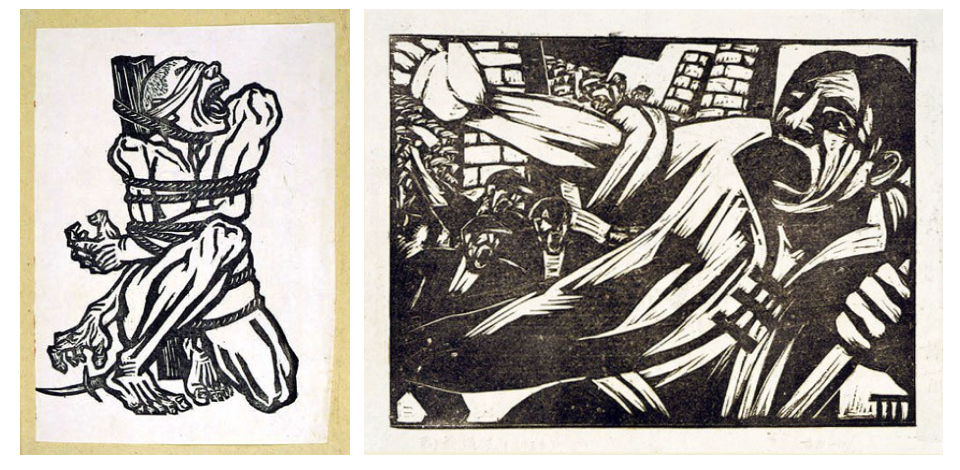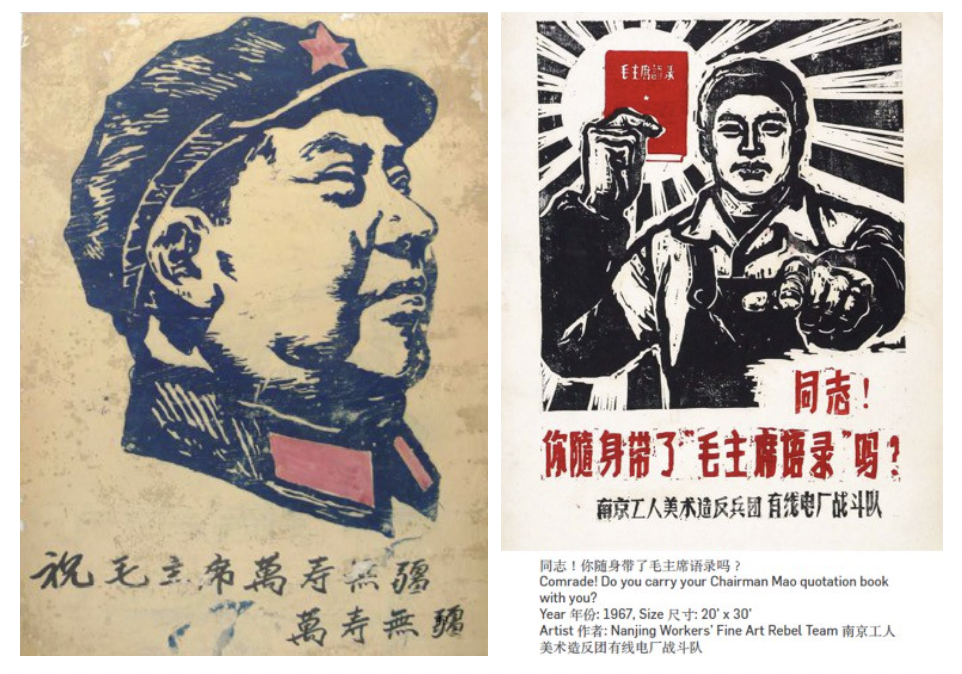As part of the Fairbank Center’s exhibition of dazibao (大字报 “big-character posters”) and woodcuts from 1960s China, we present a four-part series on Cultural Revolution-era artworks. Julia Murray, Professor Emerita of Art History, East Asian Studies, and Religious Studies, at the University of Wisconsin-Madison, explores the artistic tradition of revolutionary posters in China.

Read Part 1: Reading “Big-Character Posters” by Denise Ho.
Read Part 2: The Visual Spectacle of “Dazibao” by Xiaofei Tian.
Read Part 3: Dazibao Exhibitionism by Jie Li.
The exhibition, “Red and Black Revolution: Dazibao and Woodcuts from 1960s China” is on display at Harvard University’s Fairbank Center for Chinese Studies from November 9 -30, 2017.

Pictorial posters have been made in China since the 1920s to promote the ideology and policies of the Communist Party, particularly to foster revolutionary culture among the masses. Visual propaganda was an important means of educating and indoctrinating the populace in the attitudes and behaviors desired by the Party. Propaganda prints from the 1930s and 1940s were influenced by German Expressionism and traditional Chinese folk prints (nianhua).

However, after the People’s Republic of China was founded in 1949, the academic mode known as “Socialist Realism” became the dominant style of propaganda art, following the example of the Soviet Union. This hyper-realistic style was taught in China’s art academies during the 1950s. It appealed to popular tastes and its messages were easy to grasp, making abstract ideology concrete and comprehensible through model figures who were portrayed vividly to inspire viewers. Posters made during the Cultural Revolution are bold and forceful, and the larger-than-life figures display heroic gestures and fervent expressions.

During every phase of the Cultural Revolution, pictorial posters played a crucial role in communicating the frequent changes of official policy and its interpretation, which are stated in the titles and slogans on the posters. In the initial phase, represented by the posters in this exhibition, the emphasis was on attacking “revisionism” as personified by Liu Shaoqi and Deng Xiaoping, who are sometimes caricatured as tiny figures being crushed by the righteous fists of the proletariat. With the cult of a godlike Chairman Mao Zedong becoming increasingly prominent, his head is often portrayed looming large over his devoted followers. The “Little Red Book” of quotations from his writings is ubiquitous in the posters, where it appears as an essential accessory to be clutched to the chest or waved aloft.



Julia K. Murray is Professor Emerita of Art History, East Asian Studies, and Religious Studies, at the University of Wisconsin-Madison, and an Associate in Research at Harvard’s Fairbank Center for Chinese Studies.
The exhibition, “Red and Black Revolution: Dazibao and Woodcuts from 1960s China” is on display at Harvard University’s Fairbank Center for Chinese Studies from November 9 -30, 2017.
Read Part 1: Reading “Big-Character Posters” by Denise Ho.
Read Part 2: The Visual Spectacle of “Dazibao” by Xiaofei Tian.


